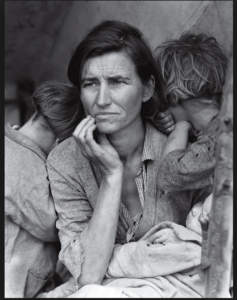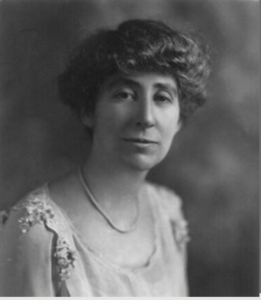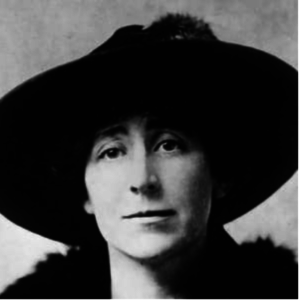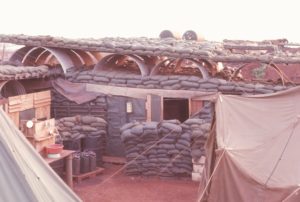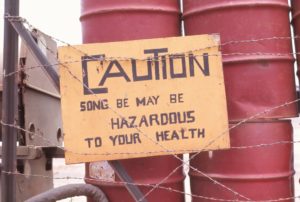In the late 1700s, Greencastle sported several Rankin men named Jeremiah. The precise number depends on whom you ask. American Revolutionary Soldiers of Franklin County, Pennsylvania has one opinion.[1] The Biographical Annals of Franklin County, Pennsylvania[2] and the History of Franklin County, Pennsylvania[3] share a second opinion. The latter two sources place an extra Jeremiah in the family tree of the Rankins of Lancaster, Cumberland, and Franklin Counties, Pennsylvania.
Let’s start with an inventory of the early proved Jeremiahs in that line, then assemble them into a family chart for the big picture.
-
- Jeremiah #1: the eldest. He was a son of Adam Rankin who died in Lancaster in 1747 (“Adam d. 1747”) and his wife Mary Steele Alexander.[4] Jeremiah #1 died in 1760 in a mill accident near Greencastle.[5] Jeremiah #1’s only appearance in county records is apparently his father Adam’s will. One would expect a probate of his estate because he inherited land, as well as guardian records for his minor children. I have found neither.
- Jeremiah #2: a son of Jeremiah #1 and his wife Rhoda Craig, and thus a grandson of Adam d. 1747. He was born during 1756-1761.[6] He moved to Fayette County, Kentucky, where he died about 1804.[7]
-
- Jeremiah #3: a proved son of James Sr. who died in 1795 and Jean Campbell Rankin. James Sr. was a son of Adam d. 1747, so Jeremiah #3 was also a grandson of Adam d. 1747.[8] Jeremiah #3 was probably born in the early 1750s, but definitely no later than 1755.[9] The identity of his children is the main issue in this article.
-
- Jeremiah #4: a proved son of William who died in 1792 and Mary Huston Rankin. Since William was a son of Adam d. 1747, Jeremiah #4 was yet another grandson of Adam and Mary. Jeremiah #4 was born in 1783. He moved to Centre Co., PA, where he died in 1874 at age 90.[10]
-
- Wildcard Jeremiah: Annals and History add another Jeremiah to this list and place him as a son of Jeremiah #3. That would make him a great-grandson of Adam d. 1747. Annals and History also name three brothers of Wildcard Jeremiah, although they disagree on one name.
Here is an abbreviated outline family chart for these Rankins, including the above list of Jeremiahs.[11]
1 Adam Rankin, d. 1747, Lancaster Co., PA, wife Mary Steele Alexander.[12] Their four children (birth order unknown):[13]
2 Esther Rankin m. Mr. Dunwoody.
2 Jeremiah #1 Rankin, d. near Greencastle, Cumberland Co., PA about 1760.[14]
3 Jeremiah #2 Rankin, b. 1756-1761, Cumberland Co., PA, d. about 1804, Fayette Co., KY. His three brothers were Rev. Adam, Thomas, and William Rankin, all of whom also went to Fayette or Woodford Co., KY.
2 James Rankin Sr., d. 1795, Franklin Co., PA, wife Jean/Jane Campbell. Identified as a son in the will of Adam d. 1747.
3 Jeremiah #3 Rankin. He and his five siblings are proved by their father’s will.[15]
4 Wildcard Jeremiah, added here by Annals and History. Annals identifies his brothers as James, David and William; History identifies them as James, David and Archie. Both are incorrect, IMO.
2 William Rankin d. 1792, Franklin Co., PA, wife Mary Huston. Identified as a son in the will of Adam d. 1747.
3 Jeremiah #4 Rankin, b. 1783, Franklin Co., PA, d. 1874, Centre Co., PA. He and his seven siblings are proved by William’s 1792 will.[16]
Let’s see what Revolutionary Soldiers has to say about Jeremiah #3, son of James and Jean Rankin:
“Jeremiah Rankin, Ranger on the Frontier, served in 1778, under Capt. John McConnell and as Ensign, 1780-81, with Captain Wm Huston; a son of pioneer James Rankin of Montgomery Township. He mar. Mary, dau. of James Clark. His will was dated June 1803 and prob. August 1803, only son James Clark Rankin and three daus: Nancy; Mariah; Esther. The widow Mary later married Charles Kilgore. James, Jeremiah, David and William Rankin were pewholders in the “Lower Conococheague” or Welsh Run Church.[17] Nancy Rankin mar. John Imbrie, Beaver Co., Penna., 10 children. Maria Rankin mar. Samuel Johnston, son of Thos. and Anne Houston Johnston. Esther Rankin mar. Alex. M. Johnston, son of Thos. and Anne Houston Johnston.”
The will of some Jeremiah Rankin was, in fact, dated and proved in 1803. It did name his wife Mary and the four children listed above.[18] Both the Annals and History believe the 1803 will was Wildcard Jeremiah’s. Revolutionary Soldiers assigns that will to Jeremiah #3. Putting it another way, Revolutionary Soldiers concludes that the Jeremiah who died in 1803 was a son of James d. 1795 and Jean Rankin. Annals and History claim that the Jeremiah who died in 1803 was Wildcard Jeremiah, a grandson of James and Jean.
Besides adding a new Jeremiah to the line, Annals throws in three other new Rankins, brothers of Wildcard Jeremiah: David, James, and William. History does the same thing, but identifies the brothers of Wildcard Jeremiah as David, James and Archie.[19] History also adds this information: Jeremiah #3, son of James and Jean, “patented 800 acres … he divided his acreage into four farms, inherited by his four sons Jeremiah, David, James and Archie” (emphasis added). I found no evidence of this in the Franklin deed or probate records.
The evidence relevant to this puzzle is not compelling on either side. I’m just going to throw it all out there and hope that someone will offer an opinion in a comment. Or, better yet, tell us about other evidence.
-
- I cannot find an 800-acre patent by a Jeremiah Rankin in the Pennsylvania patent records. Perhaps it was in a part of Pennsylvania that is now in another state? I am clearly missing something. Surely, History did not imagine that patent. The will of Jeremiah who died in 1803 mentioned land in Ohio, but where? Perhaps somebody can point us to a source …
- History says the four sons of Jeremiah #3 inherited that 800-acre tract. I have found only one will and estate record for a Jeremiah Rankin in Franklin: the Jeremiah who died in 1803 and had only one son, James Clark Rankin. I can’t find any relevant estate records for a second Jeremiah, who would (according to Annals and History) be Jeremiah #3. If anyone knows anything about the estate of a second Jeremiah who died in Franklin, I’d love to hear about it.
- I cannot find the four alleged sons of Jeremiah #3 in the Franklin records. I found only one Archibald (“Archie”) Rankin. He was easy to track. He was Archibald (1762 – 1845), a son of William and Mary Huston Rankin. If three brothers of Wildcard Jeremiah actually existed, they clearly got the heck out of Dodge early without bothering to leave significant tracks in the records. All of the David, William, James, and Archibald Rankins who appear in the Franklin Co. records can reasonably be accounted for without any “extras” left over.
- The family of James Sr. and Jean Rankin lived in the area that became Montgomery Township, Franklin County. James Sr.’s sons William, James Jr. and Jeremiah started appearing on tax lists there in 1778. A wrinkle appeared in 1782, when a second Jeremiah showed up on the same tax list as James Sr. and family. The second Jeremiah is identified as a “freeman,” meaning he was 21 or over, not married, and owned no land. That freeman is obviously not Jeremiah #1 (who died about 1760), Jeremiah #3 (on the 1782 tax list as a landowner), or Jeremiah #4 (who wasn’t born until 1783). Perhaps Annals and History identified Jeremiah the freeman on the 1782 tax list as Wildcard Jeremiah, a son of Jeremiah #3?
That theory doesn’t work. Jeremiah the freeman was too old to have been a son of Jeremiah #3, who was likely born in the early 1750s. Jeremiah, the freeman who first appeared on the 1782 tax list, was born by 1761, perhaps 1760.
It is possible that Jeremiah the freeman was Jeremiah #2, son of Jeremiah #1 and Rhoda Craig Rankin. The last appearance I can find in the Franklin records for Jeremiah the freeman is on the 1787 tax list. The first appearance I found for Jeremiah #2 in Fayette County, Kentucky was on the 1789 tax list. Further, freeman Jeremiah and Jeremiah #2 were about the same age. The records thus suggest that freeman Jeremiah may be the same man as Jeremiah #2. My intuition says that was the case, but my gut hunches aren’t credible evidence.
- The 1790 federal census for Franklin lists a Jeremy Rankin having three males who were 16 and over in his household, Jeremy being one of them. The 1800 census makes it clear that the head of household in the 1790 census must have been Jeremiah #3. He was listed in the “over 45” age bracket in 1800, and must be Jeremiah #3 who was born during the early 1750s. The 1800 household also includes a male in the age 26 to 45 category, who might be a (highly speculative) Wildcard Jeremiah, born 1755 – 1774. The oldest female in the household was also 26 to 45, and there were two females less than 10. Those three females fit the profile for Nancy Rankin (widow of Jeremiah d. 1803) and her two eldest daughters, Nancy C. and Mariah, twins born in 1796. The household also includes a male less than ten who could be James Clark Rankin, whose hazy birth year was 1800 or 1801.
It just isn’t clear whether Wildcard Jeremiah actually existed. I find myself agreeing with Revolutionary Soldiers for two reasons. First, it’s a pretty tight squeeze to add an extra generation of four sons between Jeremiah #3, who was born in the early 1750s and a ranger on the frontier in the early 1780s, and the death of another Jeremiah with four children in 1803. It’s possible, but has a strong whiff of improbability.
Second, Revolutionary Soldiers, written by a woman in conjunction with the Chambersburg D.A.R., has more credibility chops than either Annals or History, books churned out for profit for many counties in Pennsylvania, generally by the same publishers.
When all else fails, go with the trustworthy source. I would delete Wildcard Jeremiah and his three alleged brothers from this Rankin family tree. That would make Jeremiah #3 the man who died in 1803, leaving a widow Nancy, daughters Nancy, Mariah and Esther, and a son, James Clark Rankin.
I hope someone who reads this will uncover some evidence about those 800 acres Jeremiah #3 allegedly devised to his four sons. It would also be nice to see evidence about Wildcard Jeremiah’s three alleged brothers.
* * * * * * *
[1] Virginia Shannon Fendrick, American Revolutionary Soldiers of Franklin County, Pennsylvania (Chambersburg, PA: Historical Works Committee of the Franklin County Chapter of the D.A.R., 1969) (copyright 1944) 180.
[2] Biographical Annals of Franklin County, Pennsylvania, Volume I (Chicago: The Genealogical Publishing Co., 1905) 126-28.
[3] S. P. Bates, History of Franklin County, Pennsylvania (Chicago: Warner, Beers & Company, 1887) 68.
[4] Lancaster Co., PA Will Book J: 208, will of Adam Rankin of Lancaster dated and proved in 1747. The will names children James, William, Jeremiah, and Esther Rankin Dunwoody. For proof that Adam Rankin’s wife was Mary Steele Alexander, see the article here.
[5] Rev. Robert Davidson, History of the Presbyterian Church in the State of Kentucky (New York: R. Carter, 1847) has information about Rev. Adam Rankin, son of Jeremiah #1 and Rhoda Craig Rankin. It says Jeremiah #1 died in 1760, when Rev. Adam was five. The book is available online here.
[6] Jeremiah #2 of Fayette Co., KY had an older brother, Rev. Adam Rankin, whose birth year of 1755 is proved. The father of Jeremiah #2 and Rev. Adam — Jeremiah #1 — died in 1760. Jeremiah #2 must therefore have been born during 1756 through 1761, inclusive. See the article about Jeremiah #1 and Rhoda Rankin’s son Adam titled, “Rev. Adam Rankin of Lexington, KY: Psalmody and Other Controversies,” here.
[7] Jeremiah #2’s last appearance on the Fayette Co., KY tax lists was in 1803. He definitely died by 1808, when his son Samuel was identified as a ward in a guardian’s bond.
[8] Franklin Co., PA Will Book A: 345, will of James Rankin dated 1788 and proved 1795. The will names his wife Jean, sons William, Jeremiah, James (Jr.), and David, and daughters Ruth Rankin Tool and Esther Rankin Smith.
[9] Jeremiah #3 was listed in the 1800 federal census for Cumberland Co., PA in the “45 and over” age category, so he was born no later than 1755. Jeremiah #3’s elder brother William was probably born 1746-1750. On balance, 1750-1755 seems a good estimate for Jeremiah #3’s birth.
[10] Mary Belle Lontz, Tombstone Inscriptions of Centre County, Pennsylvania (1984).
[11] This Rankin family all lived near Conococheague (or Conogocheague) Cr. in what is now Franklin Co. in southern Pennsylvania near Greencastle. As nearly as I can tell from the land and tax records, many members of this Rankin family stayed in that area for several generations.
[12] Some researchers believe that Mary Steele Alexander was Adam’s second wife. I have no idea whether that is correct because I have seen no evidence. All I know for certain is that Adam married Mary Steele, widow of James Alexander, sometime between 1718 and 1724.
[13] Adam’s 1747 will named three sons James, William, and Jeremiah Rankin, and a daughter, Esther Rankin Dunwoody. That is probably the correct birth order for the sons. I don’t know where Esther belongs in the list. Lancaster Co., PA Will Book J: 208.
[14] So far as I know, the best evidence regarding Jeremiah’s #1’s family is oral tradition contained in an 1854 letter and a book about Kentucky Presbyterians, see Note 5. The letter identifies the children of Jeremiah #1 and Rhoda Craig Rankin as: (1) Rev. Adam Rankin of Lexington, Fayette Co., KY, 1755 – 1827 (the Psalmody fanatic), wife Martha McPheeters; (2) William Rankin, b. 1757, d. 1797 or 1798, Woodford Co., KY; (3) Thomas Rankin, d. Woodford, Co., 1808, wife Mary “Polly” Young; and (4) Jeremiah #2 Rankin, d. abt. 1804, Fayette Co., KY.
[15] See note 8.
[16] Franklin Co., PA Will Book A: 256, will of William Rankin, dated and proved in 1792. Wife Mary Huston Rankin. Here are their children. (1) Dr. Adam Rankin, b. 1762, Cumberland, PA, d. 1820-30. Went to Henderson Co., KY and married three times. (2) Archibald Rankin, b. 1764, d. 1845, Franklin Co., wife Agnes Long. (3) James Rankin, b. 1766, d. after 1820. Went to Centre Co., PA. (4) William Rankin, 1770 – 1847. Went to Centre Co., PA. Married #1 Abigail McGinley and #2 Susannah Huston. (5) Betsy Rankin, b. 1774. (6) David Rankin, b. 1777, d. 1853, Des Moines Co., IA. Wife Frances Campbell. (7) John Rankin, b. 1779, d. 1848. Went to Centre Co., PA, married Isabell Dundass. (8) Jeremiah Rankin, 1783 – 1874, to Centre Co. Wife Sarah Whitehill.
[17] The Welsh Run (Lower Conococheague) Church is about 4.2 miles southwest of Mercersburg in Montgomery Township, where the family of James and Jean Rankin lived and owned land. Conococheague Cr. crosses PA Highway 995 about a mile NE of Welsh Run. The pewholders named in Revolutionary Soldiers should all be from the line of James d. 1795 and his wife Jean, and are almost certainly their four proved sons. The Presbyterian Church of the Upper West Conococheague, attended by some of the family of William and Mary Huston Rankin, is located in Mercersburg. Seehttps://catalog.hathitrust.org/Record/009040742.
[18] Franklin Co., PA Will Book B: 167, will of Jeremiah Rankin of Montgomery Twp. dated 13 Jun 1803 proved 1 Aug 1803. Wife Mary, four minor children, all less than 18: James Clark Rankin, only son; daughters Nancy Rankin, Mariah Rankin and Esther Rankin. Mentions land in Ohio. Executors wife, brother James Rankin, brother-in-law James Clark, brother-in-law David Humphreys. Witnesses John McFarland, David Rankin, John Rankin. Nancy and Mariah were twins, born in 1796. James Clark Rankin was b. 1800-01. Esther was b. 1802.
[19] S. P. Bates, History of Franklin County, Pennsylvania (Chicago: Warner, Beers & Company, 1887) 68.












